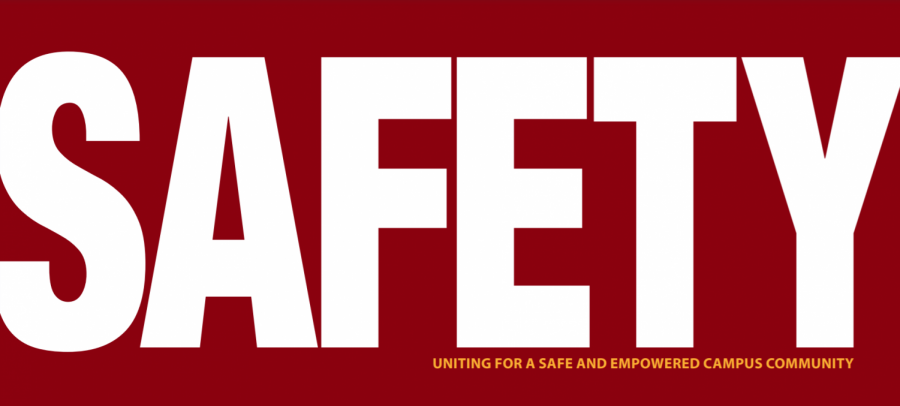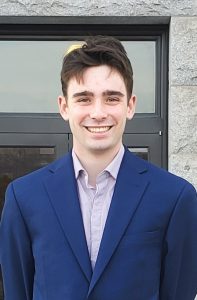Campus Safety Report Shows Increase in Sexual Related Offenses and New Safety Services for Students
March 2, 2021
In December 2020, the University of Utah published its Annual Security and Fire Safety Report for 2020. Among the campus crime statistics, there were increases in interpersonal violence crimes. From 2018 to 2019, stalking increased from 30 to 62 cases and rape increased from 12 to 20 cases. Dating violence and aggravated assault showed only minor increases in the same period.
Overall, the report provides statistics for crimes committed on campus, in student housing, or in areas next to the University for the past three years. The data is compiled from various safety providers, including University Police and Campus Security Authorities.
“At the U specifically, it is important to note that these data reflect all incidents occurring within the University of Utah, including incidents at the hospitals and clinics, and do not always involve students,” said Director of Administration at the Office of the Chief Safety Officer Annalisa Purser in a written statement.
The Report
While the statistics in the report reflect quantitative case counts, what is not reflected are prosecutions, positive outcomes, arrests or when University Police are able to intervene and prevent a crime from occurring.
“There are instances within these numbers that yeah, there was an aggravated assault, but it doesn’t tell you, well, what was the outcome of that. Whether we caught the guy or we made arrests, or we prevented potential assault from a stalking suspect,” said University Police Patrol Lieutenant Ryan Speers.
According to Speers, the university as a whole has stepped up its game by improving campus safety and that the increase in numbers is not necessarily a bad thing, rather, it is the outcome of doing a better job of encouraging victims to come forward.
“We’ve worked hard to be plugged in more with the community and to establish stronger relationships. So that moving forward we can hopefully service communities better,” said Jason Hinojosa, acting Chief of University Police.
Speers said the Utah State Legislature has enforced statutes that protect against stalking with the definition of stalking being more clearly defined and punishments stricter, with one such statue coming into effect this past July.
“As far as being able to help victims, at least through a criminal investigation, from that standpoint, it makes it easier to get protective orders or stalking injunctions,” Speers said.
Other offenses like motor vehicle theft or burglary showed fluctuations and did not see increases.
“We’ve had some serial creditors and been able to make some arrests, and then they kind of stopped for a period of time. I think we try to evaluate the data ongoingly rather than just at the end of the year,” Speers said.
Changes to Public Safety
In an effort to improve security on campus, the U announced in December 2019 that Marlon Lynch would be appointed to the role of chief safety officer, the first position of its kind within University administration. Lynch recently announced his decision to leave the U and take a position to serve as the inaugural vice president for public safety and chief of police at Michigan State University, his alma mater.
“Two new public safety committees were also established this year — a Public Safety Advisory Committee and an Independent Review Committee. They are composed of students, faculty and staff from across the institution and are designed to ensure a broad representation of constituents are included in public safety decision-making,” Purser said.
Public safety divisions were restructured so that instead of reporting to the chief of police, they would report directly to the CSO and a new division, Community Services, which was set up to provide independent aid to victims as well as respond to mental health crises.
“Increases of reports of any form of sexual and or relationship violence indicate a need for more awareness and education, primary prevention, and resources for survivors,” said Ellie Goldberg, Assistant Director of Advocacy at the Center for Student Wellness, in a written statement.
According to Hinojosa, the goal of the Community Services Division is to respond to non-dangerous and non-violent mental health calls where they could better handle the incident than a police officer would.
“We fully recognize that not everything needs a police officer, but the threat response is to help the victims of crimes and to help with the impact of those kinds of issues like domestic and interpersonal violence,” Hinojosa said.
In 2019, University Police hired its first in-house victim advocate and all students are now required to complete an online sexual assault prevention training course.
“Sometimes people don’t always come forward and give you those great ideas, or you’re trying to solicit that feedback. Always trying to work on how we can improve, even if we have a very dialed-in system is important. We can’t be complacent with safety,” Hinojosa said.








